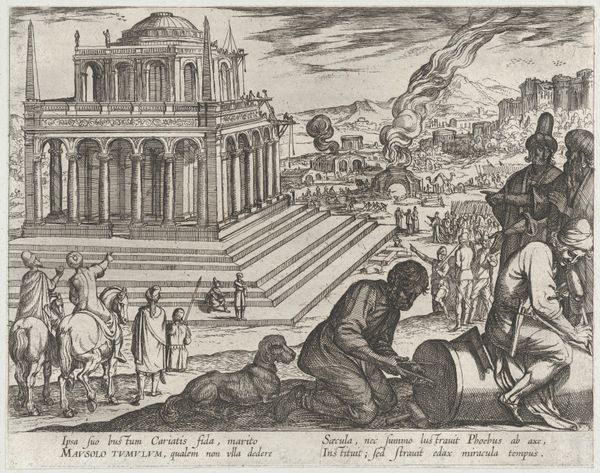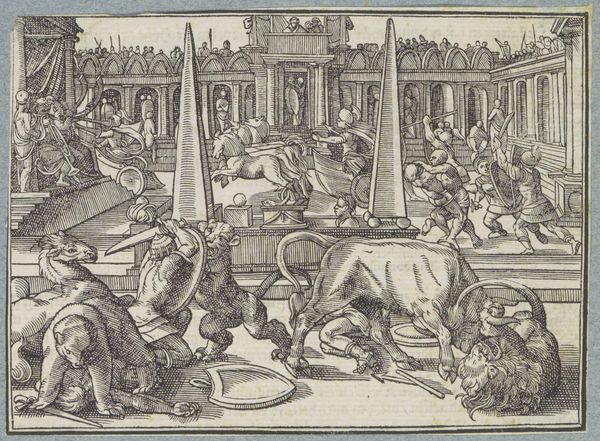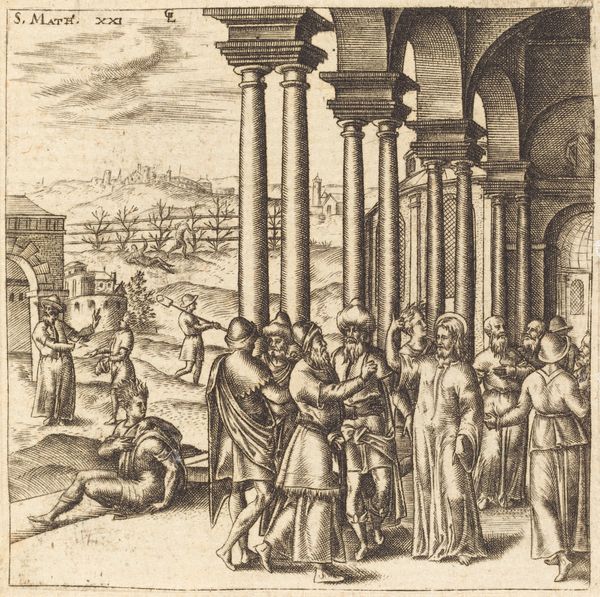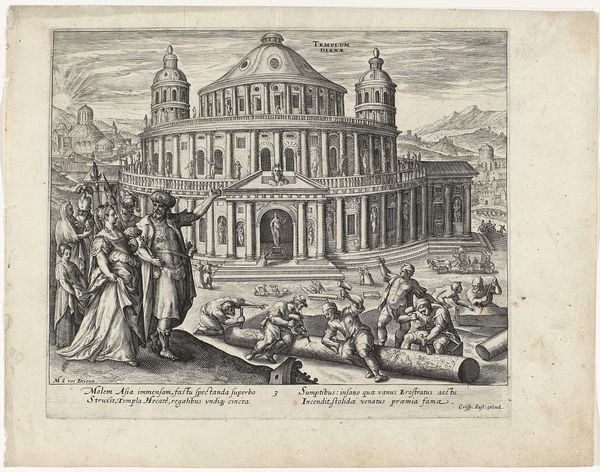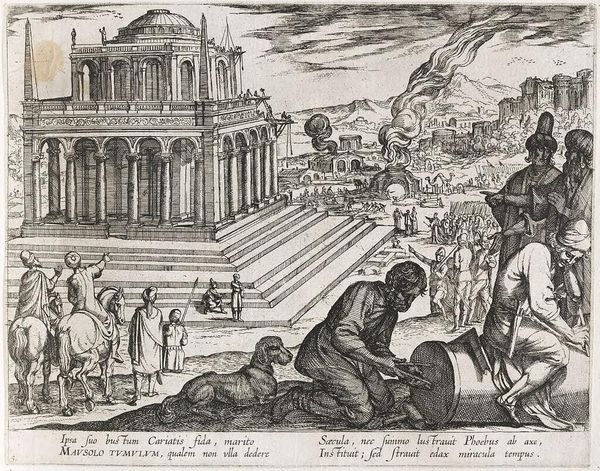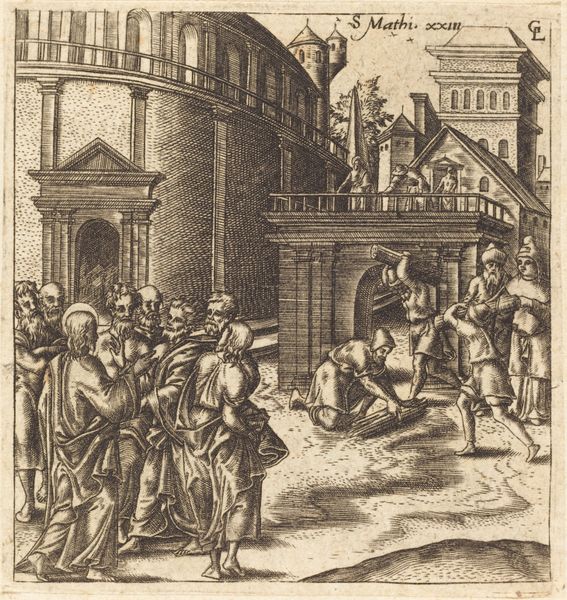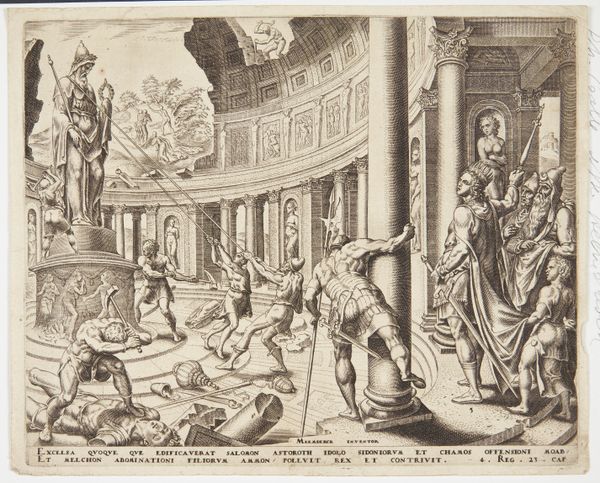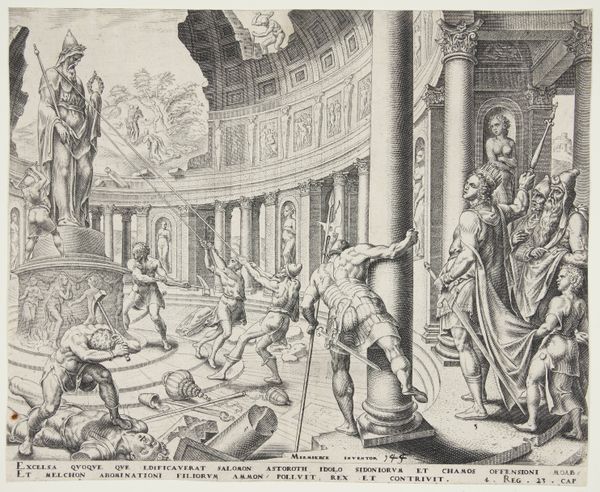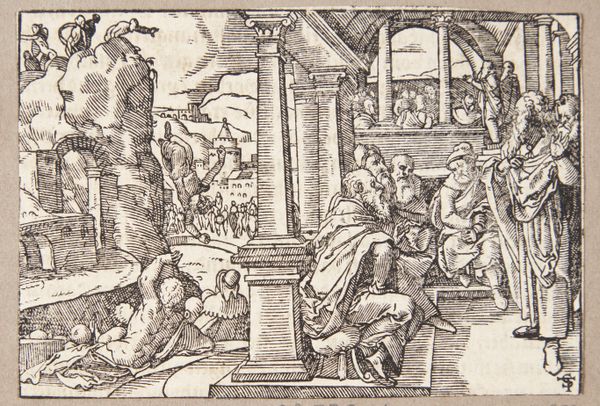
print, engraving, mural, architecture
#
narrative-art
# print
#
landscape
#
figuration
#
coloured pencil
#
cityscape
#
history-painting
#
italian-renaissance
#
engraving
#
mural
#
architecture
Dimensions: height 211 mm, width 258 mm, height 539 mm, width 370 mm
Copyright: Rijks Museum: Open Domain
Philips Galle created this hand-colored engraving, “Temple of Diana at Ephesus,” in the late 16th century. The image depicts the construction of this ancient wonder, one of the grandest monuments of the Hellenistic world, in present-day Turkey. Note how Galle’s image positions classical architecture alongside scenes of labor. The workers, rendered with a kind of idealized masculinity, are actively constructing the very temple we see in the background. Their physical exertion is palpable, almost heroic. This engraving reflects the cultural fascination with antiquity during the Renaissance, and the way it was both idealized and actively reconstructed. Consider the symbolism inherent in representing labor this way. It presents a vision of a society actively shaping its world, with the temple as a symbol of human achievement and devotion. The Temple embodies a mix of civic pride, religious fervor, and the sheer will to create something awe-inspiring, linking ancient endeavors with the aspirations of Galle’s own time.
Comments
No comments
Be the first to comment and join the conversation on the ultimate creative platform.


